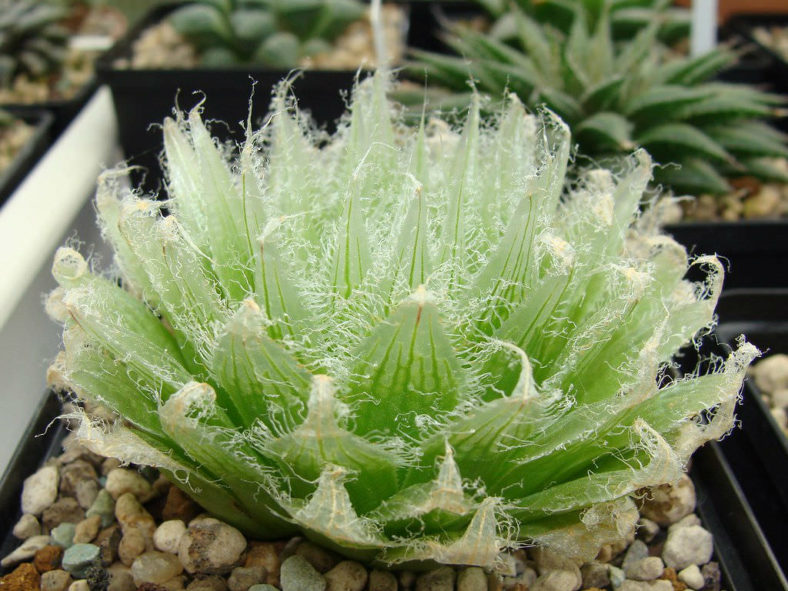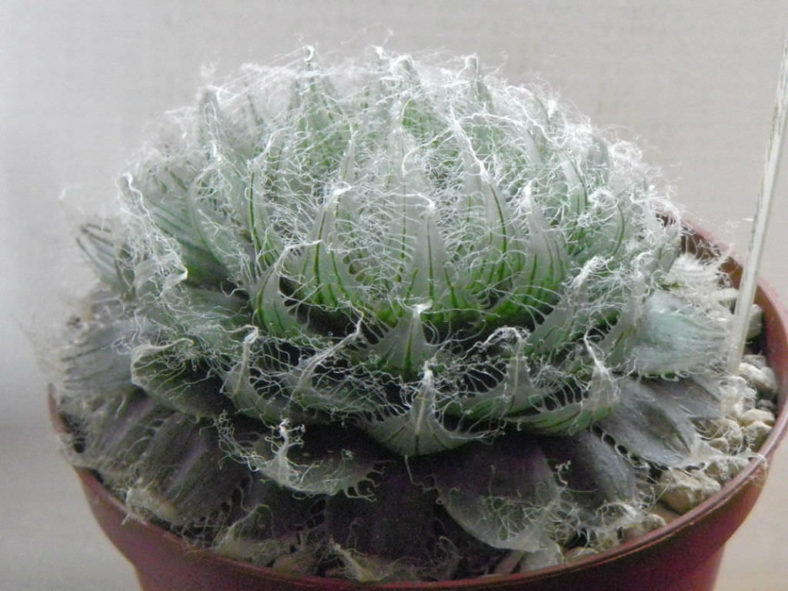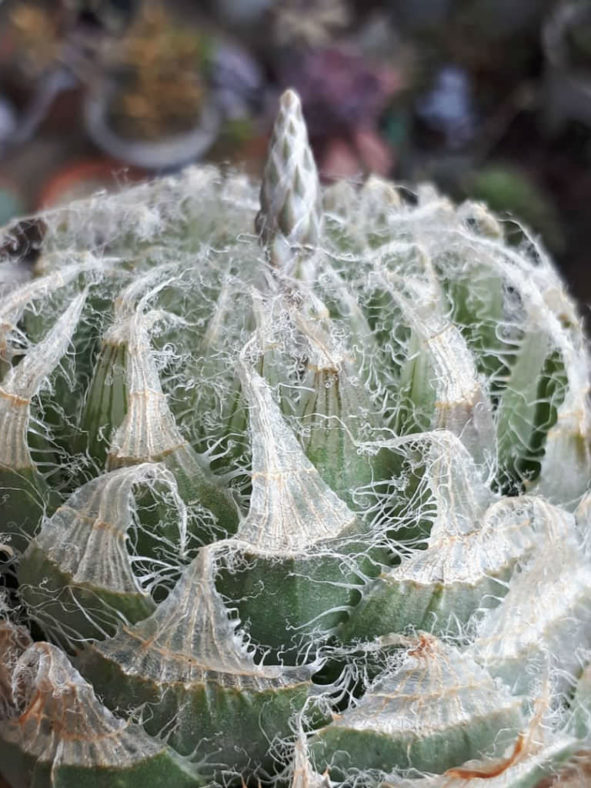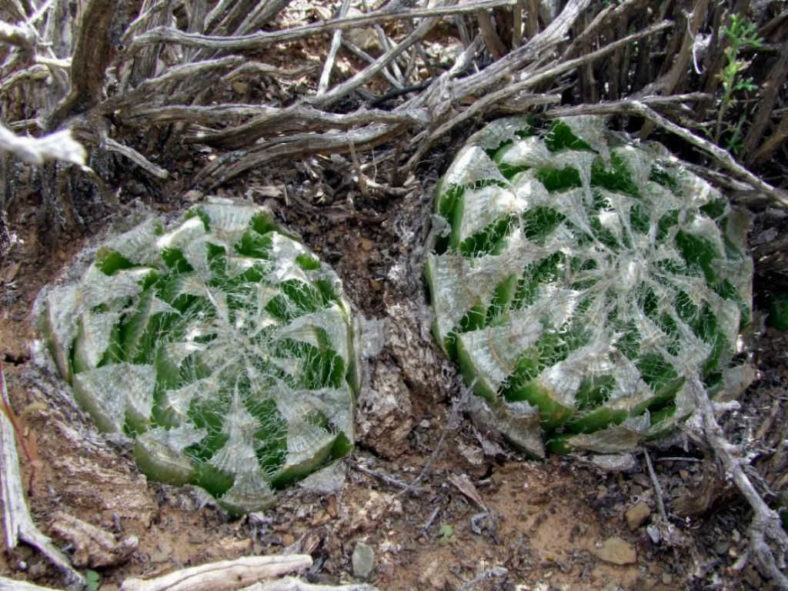Scientific Name
Haworthia semiviva (Poelln.) M.B.Bayer
Synonym(s)
Haworthia arachnoidea var. semiviva, Haworthia bolusii var. semiviva
Scientific Classification
Family: Asphodelaceae
Subfamily: Asphodeloideae
Tribe: Aloeae
Genus: Haworthia
Etymology
The specific epithet "semiviva" (pronounced sem-ee-VEE-vuh) means "half-alive (almost dead)" and refers to the leaf ends that die back to afford the plants a protective umbrella of dry white leaf tissue during the summer dormancy.
Origin
Haworthia semiviva is native to South Africa (Western Cape and Northern Cape).
Description
Haworthia semiviva is a small succulent that forms stemless rosettes of pale green, translucent leaves with prominent longitudinal lines and long bristles along the margins and keel. It is proliferous from the base and leaf axils and forms a small clump. The rosette can reach a diameter of 2.4 inches (6 cm). The leaves are lance-shaped and incurved, measuring up to 2.4 inches (6 cm) long and 0.6 inches (1.5 cm) wide. The young leaves are erect, while the old ones are ascending to somewhat spreading. In the plant's native habitat, the tips of the leaves dry and fold to protect it during the long, dry summer.
The white flowers have brown veins and appear spirally arranged on usually unbranched stalks that can grow up to 14.4 inches (36 cm) long. They appear in spring and sometimes in early summer.

How to Grow and Care for Haworthia semiviva
Light: Although some species can grow in full sun, most Haworthias are adapted to thrive in partial shade. Place the potted H. semiviva in a bright area with some protection from the hottest rays of the day.
Soil: All Haworthias do not like their roots to remain wet for prolonged periods, so their potting soil should be well-drained. Use a commercial succulent potting mix or make your own.
Hardiness: Haworthias like warmer temperatures in the summer but cool in the winter. However, they do not like being too cold. H. semiviva can withstand temperatures as low as 30 to 50 °F (-1.1 to 10 °C), USDA hardiness zones 10a to 11b.
Watering: In spring and fall, when the growth is most active, water H. semiviva thoroughly, then wait until the top of the soil dries out before watering again. Water your plant less during the winter when its growth slows down significantly. When this plant is mostly dormant during the hottest summer months, water it just enough to keep the leaves from shriveling.
Fertilizing: Haworthias do not require much fertilizer, but fertilizing is a good idea for optimum growth. Feed only with a dilute fertilizer and only during the active growing season.
Repotting: These succulents are generally slow-growing and can stay in the same pot for years. However, for best health, H. semiviva should be repotted into fresh soil every two to three years.
Propagation: This species is not known to produce offsets, so propagation is by seeds or leaves. Remove a healthy leaf from the rosette, along with a slight bit of attached stem tissue. Allow the leaf to callous over for several days, and then put it in a container with a well-draining soil mix. Sow seeds in spring or fall in a well-draining soil mix.
Learn more at How to Grow and Care for Haworthia.
Toxicity of Haworthia semiviva
Haworthia species are generally non-toxic to humans and animals.
Links
- Back to genus Haworthia
- Succupedia: Browse succulents by Scientific Name, Common Name, Genus, Family, USDA Hardiness Zone, Origin, or cacti by Genus
Photo Gallery
Click on a photo to see a larger version.


